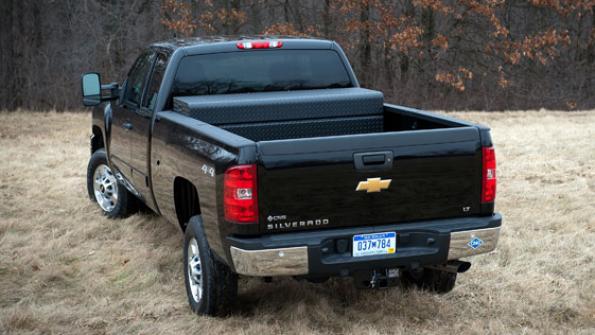Alternative Fuels: The new alt-fuel combo
What is in this article?
Converting to bi-fuel
Canada’s Westport Innovations is one of six qualified vehicle modifiers providing a bi-fuel CNG/gasoline package for Ford’s F-250 and F-350 SuperDuty models called the “WiNG” system.
Westport’s LD (light duty) division notes that the up-charge for equipping either of those Ford Super Duty models with the “WiNG” bi-fuel system is $9,750, with an extra $1,200 added if buyers want to add a 24 GGE CNG storage tank versus the standard 18.4 GGE package – a cost in line with the $8,000 to $10,000 extra required to power such models with diesel engines, said Brian Raithsburg, Ford’s F-Series Super Duty marketing manager.
“It gives pickup operators a strategic opportunity, especially for small fleets,” he says. “For those operating for example in Texas, Oklahoma, and Pennsylvania where numbers of public CNG filling stations exist, they can achieve savings from the lower cost of natural gas over time. That clearly factors into the TCO [total cost of ownership] decisions they’re making.”
However, all of the bi-fuel CNG/gasoline pickups hitting the market are still in their infancy, with orders only beginning to trickle in – orders that, surprisingly, are not just coming from state and municipal fleets that may try to take advantage of the MOU signed last November that’s been broadened to involved 22 states, up from the four original signers.
Indeed, Bob Hegbloom, director of the Chrysler’s Ram truck division, says the demand for the company’s new bi-fuel 2500 HD pickups unveiled in March quickly shifted unexpectedly. “We originally laid it out as a big fleet play; a truck that large fleets operating 50 to 100 vehicles or more would be the most capable of utilizing as they had more resources to address CNG refueling infrastructure needs,” he says.
“But right away, we started getting calls from our dealers for a ‘retail’ option so they could sell these bi-fuel trucks to small fleets operating say five vehicles as well as individual buyers,” Hegbloom says. “It was just surprising how fast demand for such alternative fuel options spread.”
Ram’s bi-fuel 2500 HD pickup will be sold in a crew cab configuration with either a long or short bed for $47,000, the company says. Powered by a 5.7-liter Hemi V8 engine linked to a 6-speed automatic, the bi-fuel Ram 2500 HD comes equipped with two CNG tanks providing 18.2 GGE worth of storage secured in the pickup’s bed to its frame. The truck also comes with an eight-gallon gasoline tank.
The reason for the interest in such a bi-fuel platform is pretty simple, Hegbloom says: cost. With diesel engines and mandated emission control systems adding in some cases $10,000 to the base sticker price of a heavy-duty pickup, Hegbloom says fleets and individual buyers are strongly exploring a move to alternative fuels.
“CNG is a widely accepted fuel in the U.S., Europe and Asia,” says Robert Lee, VP and head of engine and electrified propulsion engineering for Chrysler. In addition, he says that CNG reduces smog-producing pollutants between 70 and 90 percent and significantly reduces greenhouse gas emissions. He adds that the CNG-only range for the Ram is estimated to be 255 miles, while the backup supply of gasoline extends the range to 367 total miles.
Public sector adoption
Those are the kinds of numbers that attracted the attention of Vincent Olsen, superintendent of internal services for the Algonquin, Ill., who just ordered several of the Ram 2500 bi-fuel trucks for his municipality’s fleet.
“What many don’t understand are the expectations of public service; we’re in the crosshairs of the taxpayer if we don’t get the job done,” he says. “That’s why, while CNG is a clean and inexpensive fuel and we want to support its use here in the U.S., first and foremost we must serve our customers.”
That’s why the bi-fuel option makes better sense for Algonquin, Olsen says. “It allows us to support innovation and the use of a domestic fuel without compromising or restricting our ability to serve our residents.”
Olsen adds that public fleet managers like him are not easily swayed, either, by alternative fuel technology because of the service demands placed upon them by taxpayers.
“Once we get our trucks set the way we need to get the job done, we tend to be risk averse; we don’t want to change anything that might jeopardize our ability to deliver the expected level of service,” he says. “But these [bi-fuel] trucks help us minimize that risk. That’s why we think it’s worth adding them to our fleet.”
Sean Kilcarr is senior editor with Fleet Owner, an American City & County sister publication.
















